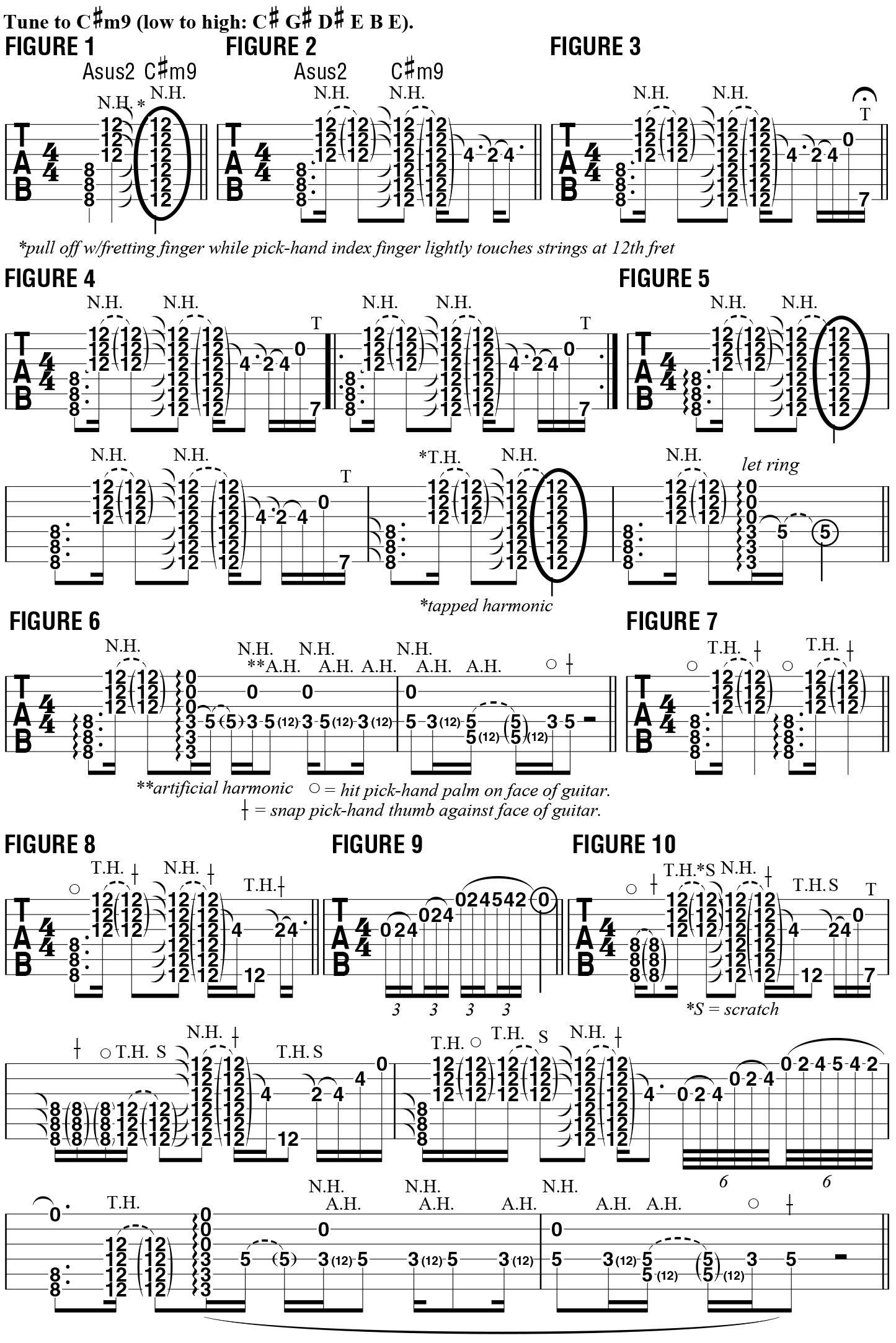New Horizons in Acoustic Guitar: Using Unusual Techniques and Tunings
Experimenting with new tunings can open up new creative avenues.
In writing “The Old Room,” for my latest release, Era, I was inspired by two things: 1) a little gadget called the ToneWood Amp that affixes to the back of an acoustic guitar and enhances the natural sound of the instrument by generating some great sounding reverb and delay effects, and 2) an unusual new tuning I had recently discovered—open Bm9 (low to high, B F# C# D A D). For this month’s column, I will be demonstrating the guitar parts from this song, tuned one whole step higher, to open C#m9 (low to high, C# G# D# E B E). This tuning has a nice, haunting vibe that I find very inspiring.
The signature element in this piece is the variety of ways in which the strings are “attacked” as it unfolds. Along with conventional picking, natural harmonics and artificial harmonics, I also use fret-hand pull-offs as a means to “attack” the strings in the execution of pulled-off harmonics. In past columns, I had demonstrated this technique as applied to single notes, but here, I’m applying it to chords.

FIGURE 1 represents the first few elements of “The Old Room.” I begin by strumming an Asus2 chord, barred across the bottom three strings at the eighth fret, followed by natural harmonics performed by laying my fret-hand pinkie across the top three strings at the 12th fret, which is also strummed conventionally. I then pull the fret-hand finger off the strings while lightly touching all of the strings at the 12th fret with the index finger, sounding natural harmonics on all six strings.
In FIGURE 2, I repeat this pattern and end with a hammer-on to the fourth fret on the third string, followed by a pull-off to the second fret and a re-hammer back up to the fourth fret. FIGURE 3 brings in the next part, which is to add a fingerpick of the open second string, as well as a tap onto the sixth string’s seventh fret. Cycle this pattern as shown in FIGURE 4. FIGURE 5 illustrates the manner in which the first four bars should be played.
The next element involves steady alternation between the fourth and second frets on the third string while natural and artificial harmonics are added, as shown in FIGURE 6. At the end of this figure, the percussive elements are introduced as I strike the body of the guitar with my palm (kick drum emulation) and thumb (snare drum emulation). FIGURES 7 and 8 reveal further incorporation of these percussive techniques. In bar 3 of the song, I play a fast ascending hammer-on/pull-off phrase on the top three strings, shown in FIGURE 9.
FIGURE 10 brings everything together in the complete phrase. The challenge is in combining all of these different moving parts, so close attention to detail is essential.
Get The Pick Newsletter
All the latest guitar news, interviews, lessons, reviews, deals and more, direct to your inbox!







![Joe Bonamassa [left] wears a deep blue suit and polka-dotted shirt and plays his green refin Strat; the late Irish blues legend Rory Gallagher [right] screams and inflicts some punishment on his heavily worn number one Stratocaster.](https://cdn.mos.cms.futurecdn.net/cw28h7UBcTVfTLs7p7eiLe.jpg)


